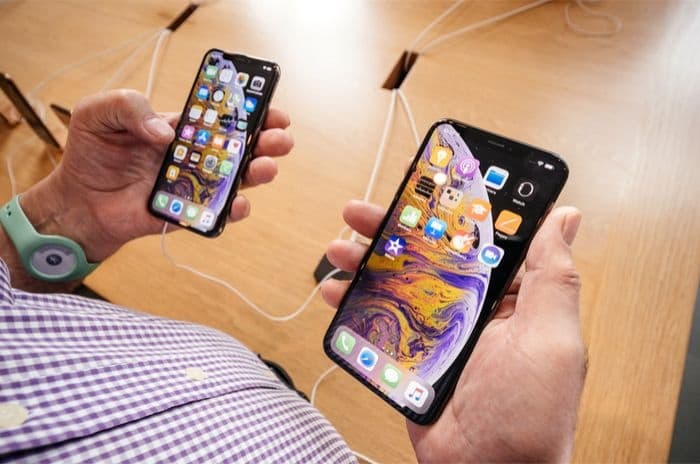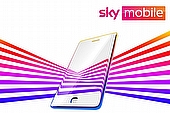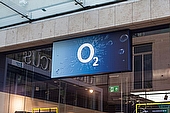When we say, 'blow it out of the water', perhaps we mean 'give it a poke with a small stick'. Because on paper, there's not an awful lot to get excited about. The design is the same. The specs aren't that much better. So why on earth do Apple think we need to upgrade already?
Well, these two new smartphones have a few tricks up their sleeves which might have you reaching for your credit card rather swiftly.
Usually when we're looking at an 'S' model Apple phone, we're drawn to compare it to the cheaper previous year's model to see if it's worth the investment. However, Apple have made the decision to discontinue the iPhone X for the release of the XS and XS Max, so although comparisons can be made, they won't help you make a purchase decision any more.

However, there are plenty of other high end smartphones out there, and with the highest price tag in the handset market, the XS and XS Max have a lot to live up to.
(P.S. just to help you not sound like a noob, it's pronounced 'ten-S' not 'ex-ess'. We learnt that one the hard way.)
At a glance
| Price | From £999 for the 64GB XS to £1,449 for the 512GB XS Max |
|---|---|
| Pros |
· Improvements to camera · Better processor · Now available in 512GB |
| Cons |
· No fast charging cable included (or 3.5mm headphone adapter) · Still the most expensive phones on the market · No design improvements |
Price
The sort-of good news is that the XS hasn't increased in price over the eye wateringly expensive iPhone X. It's on sale in the UK for £999 for the 64GB version, or a staggering £1,149 for the 256GB edition. For the max storage, the 512GB XS will set you back £1,349.
The XS Max, however, comes at a frighteningly high price. The cheapest option is £1,099, rising to £1,249 for the 256GB version or a whopping £1,449 for the 512GB handset.
The XS Max is not only the most expensive Apple phone ever to be launched, it's the world's most expensive smartphone in history. It's a lot of phone, but it's an awful lot of money too.
Usability
As with any Apple device, they almost enjoy making it smashable. A protective case is recommended if you're looking to invest in one of these bad boys. In testing, the iPhone XS an XS Max both displayed notable damage after 50 drops. In comparison, the Samsung Note 9 was intact after 100.
As with the iPhone X, the home button is notably absent. For newcomers to this setup, it can take a little time to get used to the gesture controls that operate these models, but once you've become accustomed, most users say it's actually much more intuitive.
Face ID is still present, and apparently happens a little faster than on the X.
Battery
The iPhone XS should last around 30 minutes longer than the iPhone X, whereas the XS Max should last up to 90 minutes longer. That's a whole 26 hours under normal usage, making it the longest lasting Apple battery to date.
However, both phones pay a price in terms of charging time for their extra-long lasting batteries. This is, in part, due to Apple's persistence with sending out 5W charges, where competitors such as Samsung now send them out in 25W ratings.
For the iPhone XS, charging time has been found to be 195 minutes from zero to 100%. The Max is even longer, at 120 minutes. To compare these results, the Note 9 takes 105 minutes.
Overall, the upgrade to the battery life is always welcome, but whether it's enough of a step up from the iPhone X is for you to decide.
Performance
The new chipset, with its space age moniker of 'A12 Bionic', does add significant capabilities to both of these phones. Created using a 7nm process (translation: more transistors per teeny bit of space... 6.9bn in total), it's the most powerful on the market.
The hexa-core processor features two 'power' cores and an additional four for efficiency. Each one is superior to anything found in the iPhone 6, a smartphone which was cutting edge just four years ago, demonstrating just how fast smartphone tech is progressing.
So, what can all these billions of transistors and six cores do for you? Essentially, they make both the iPhone XS and the XS Max super snappy. If you're used to an iPhone X, with it's A11 CPU, you'll notice a difference straight away.
However, the technology really comes into its own when you want to play. The A12 makes augmented reality a possibility, and it includes a 'neural engine' which apparently lets your phone learn as you use it.
As well as the new chipset, the new handsets arrive with Apples latest operating system installed too. iOS 12 comes with some handy additional features, such as grouped notifications, FaceTime groups for up to 32 users and Screen Time, to monitor how you use your device.
Display
The XS boasts a 5.8 inch screen, which is pretty impressive considering its only slightly bigger than the iPhone 6, 7 and 8, all of which had 4.7 inch screens. It supports Dolby Vision and HDR10, making movies crisper and more realistic than ever.
But, of course, we have to mention the stunning screen of the XS Max. At 6.5 inches, it's larger than the Samsung Galaxy S9 (6.2 inches) and the Note 9 (6.4 inches). It's just 0.7 inches larger than the XS, but that translates to an extra 12% of screen size, which is noticeable.
In tests, the hues on both phones have been judged as more accurate. The fully OLED screens makes whites whiter, blacks blacker and films more detailed by far. Split view mode is possible with some Apple apps too, including Calendar and Mail.
Audio
The only advertised audio upgrade for the XS and XS Max have been 'wider stereo sound'. While that doesn't exactly inspire, the end results really are something to truly love.
Built in speakers at either end of the device give a louder, cleaner and more dynamic sound, with a convincing stereo experience not usually possible on smartphones.
Headphone listening has been improved too. The overall experience is punchier and has more depth. However, thanks to Apple neglecting to include a Lightning to 3.5mm adapter with the phones, you'll need to spend an extra £9 if you want to use wired headphones.
Camera
On paper, the camera upgrades don't seem to be much of an improvement over the iPhone X. Same megapixels, same 2 x optical zoom, same aperture settings.
However, thanks to the addition of Smart HDR and the powerful A12 Bionic Processor, the end results are substantially better than anything the X could produce.
Smart HDR means that the camera takes a number of images both before and after you tap the button. These are taken at a variety of speeds and exposures. The clever processor then combines the best of them all into a beautifully balanced photograph.
When conditions for shooting are less than favourable, the XS and XS Max really shine in comparison to their predecessors. Overexposure, red eye and poor detailing are a thing of the past, thanks to a larger sensor and improved processing.
The front facing camera is still the same 7MP variant, but according to Apple, operates at twice the speed of the one on board the X. Post production editing is easier too, with options to change the aperture to blur areas of the image after a shot has been taken.
All in all, the cameras on board both these models are a step up for smartphones.
Aesthetics
As far as the iPhone XS goes, well, it looks the same as the X. It really does. There's nothing at all changed with the aesthetics of this handset.
One notable change comes in the colour choice. As well as the traditional Space Grey and silver, users can now pick a gold variant (which is a bit bronze - mocha in our opinion).
The changes in the XS Max are easier to define. With a 6.5 inch display and almost invisible bezel, it's the largest smartphone to come out of the Apple stables. It's a tad shorter and narrower than the iPhone 8 plus, but the screen is bigger, which is good.
However, early adopters have said that the rounded nature of the sides make it feel rather thick, and that it doesn't sit as comfortably in the hand as iPhones usually do. And when you've spent that much money on a phone, you want to know you're holding it securely.
It's not actually thicker; at 7.7mm it's actually smaller than the Note 9, the OnePlus 6 and the Sony Xperia XZ3. The difference is in the tapering. Other manufacturers taper their handsets to sit naturally in your palm. Apple, instead, have gone for a completely flat back, which makes it more awkward to hold.
Summary
Overall, these two new Apple releases are pretty solid contenders for the premium smartphone marketplace. The improved camera and processor make them very much worth the upgrade if you're using an iPhone 8 or below.
However, for iPhone X users, it's hard to say whether these devices offer sufficient additional functionality to make it worth the change.
If you're keen to grab a new iPhone but the price tag of these bad boys is somewhat stinging, it could be worth considering the iPhone XR which is available for pre-order from October 19th.
Expected to be cheaper, but with the same cameras, processor and a new design, if you're still on the fence it would be a good strategy to compare the XS with the XR before you decide to part with your cash.









Comments